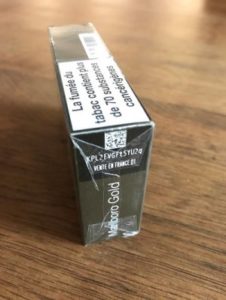Digital marking now tracks every pack of cigarettes in Europe
Dentsu Tracking is proud to feature in the June edition of the Active & Intelligent Packaging Industry Association (AIPIA) newsletter. This is a re-post of the original article published here.

It claims this is the world’s largest traceability platform. The EU-wide system tracks every single packet of cigarettes in Europe, at the unit or aggregated packaging level, for every single step of the supply chain. The numbers are impressive: 27 billion cigarette packs (per year); 750,000 economic operators; all 27 Member States; generating approximately 150 billion records (Unique Identifiers and events).
The system was developed to meet the requirements of the EU Tobacco Product Directive, in force since May 2019, which aims to protect public health via supply-chain traceability. Dentsu Tracking designed and implemented the technical specifications and data dictionary, whilst also leading the operations and data reporting for the European Commission. It was appointed sole provider to operate this EU-wide traceability system by the EC.
The basic technology involves digital traceability markings (2D code) on every pack of cigarettes. This embeds the UI (unique identifier) code required by the regulation. The UI code itself is generated by a single ID issuer appointed for the country by the respective Member State authority.
The code is then activated and aggregated to higher packaging levels (bundle, carton, pallet) on the production line in the factory. The unique cigarette pack code allows full traceability from the manufacturer to the retail outlet. Security feature elements allow customs agents to confirm the pack is not illicit and has not been altered.
Every single actor (manufacturer, importer, distributor) must report the data into a first-level storage system called a ‘Primary Repository’. A copy of all data is then communicated through a router to a central storage system, called the ‘Secondary Repository’ which is operated by Dentsu Tracking. This allows the Member States to audit and monitor tobacco production and movements.
A proactive approach to supply-chain monitoring, with a unique process of data reporting, enables validation, and authorization along the product journey. Analytical tools and alerts are available almost immediately, with all data automation happening in real time (less than 60 seconds). Authorities use the system to optimize their controls in market, based on identified patterns of illicit trade.
A mobile app and in-field tracking technologies are provided for inspections and are available using a standard smartphone. For example, authorities can gain instant access to truck inventory just by scanning the license plate, and customs agents can ensure products are legitimate when passing inspection points.
This technology use for full visibility shows the potential of supply-chain traceability, says Dentsu. Similar solutions could be applied to brand-owners to help ensure brand protection in the fight against fakes, gray market (grey market) and many other cases of unauthorised supply-chain activity.
Credit / Original source: AIPIA, June 30 2020
About
www.dentsutracking.com
For further information please contact:
Media / Press Contact
Dentsu Tracking, Geneva.